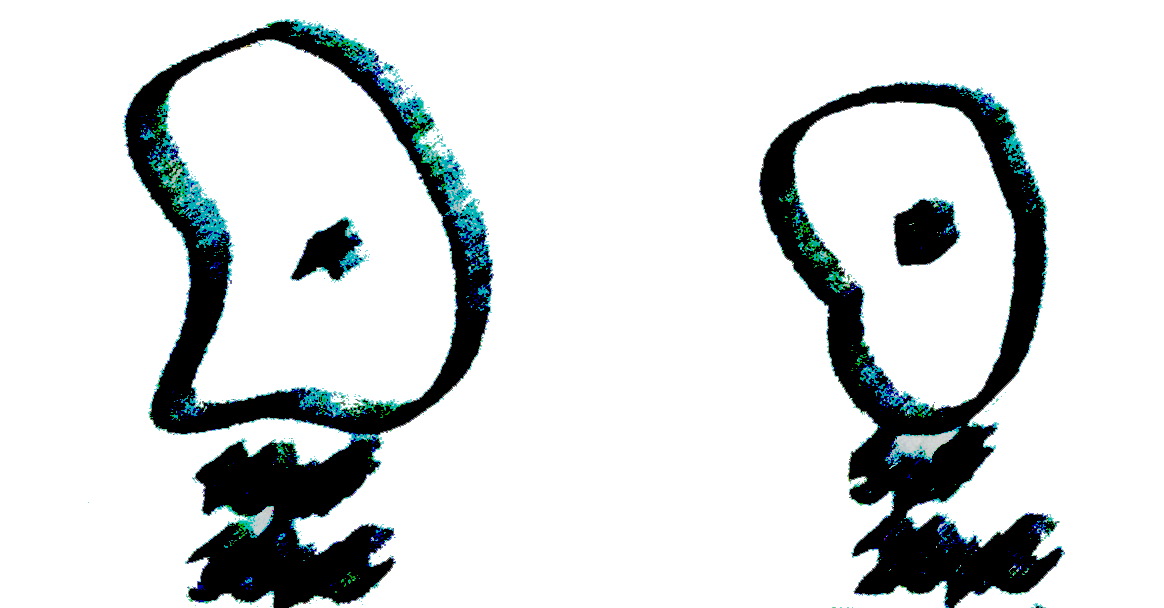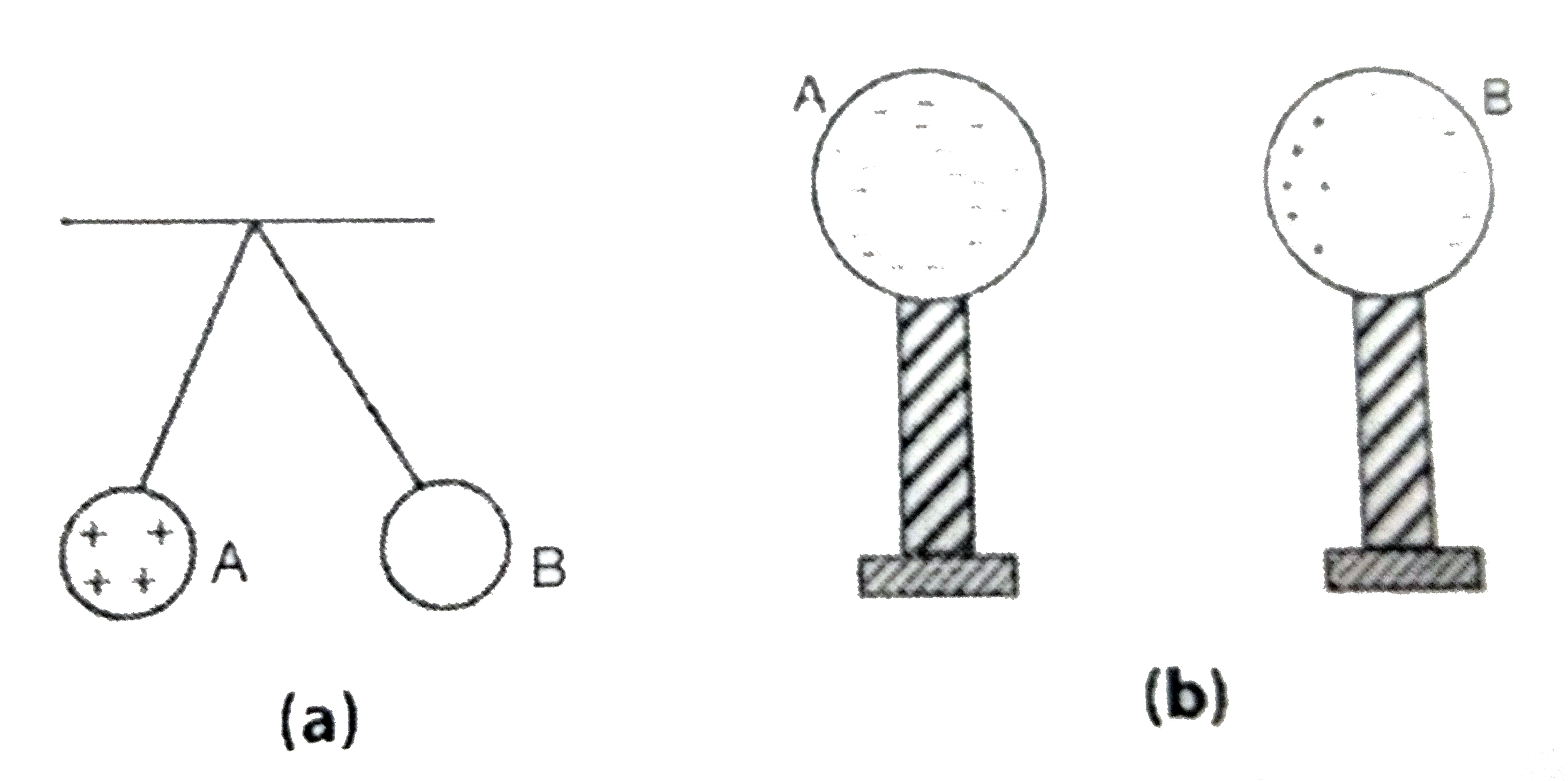Two conductors A and B are joined by a copper wire. State the direction of flow of electrons in each of the following cases:
If A is positively charged and B is negatively charged.
To determine the direction of flow of electrons between two conductors A and B, where A is positively charged and B is negatively charged, we can follow these steps:
Step 1: Identify the charges on the conductors
- Conductor A has a positive charge (let's denote it as +Q).
- Conductor B has a negative charge (let's denote it as -Q).
Hint: Remember that positive charges attract negative charges.
Step 2: Understand the potential difference
- The positively charged conductor A has a higher electric potential compared to the negatively charged conductor B.
- The potential of A can be denoted as V1 (positive), and the potential of B can be denoted as V2 (negative).
Hint: Higher potential means more positive charge, while lower potential means more negative charge.
Step 3: Determine the flow of electrons
- Electrons are negatively charged particles and they flow from a region of lower potential to a region of higher potential.
- Since B (negatively charged) has a lower potential (V2) and A (positively charged) has a higher potential (V1), electrons will flow from B to A.
Hint: Electrons move towards positive charges because they are attracted to them.
Step 4: State the direction of flow
- Therefore, the direction of flow of electrons is from conductor B to conductor A.
Final Answer: The flow of electrons is from B to A.
- Conductor A has a positive charge (let's denote it as +Q).
- Conductor B has a negative charge (let's denote it as -Q).
- The positively charged conductor A has a higher electric potential compared to the negatively charged conductor B.
- The potential of A can be denoted as V1 (positive), and the potential of B can be denoted as V2 (negative).
- Electrons are negatively charged particles and they flow from a region of lower potential to a region of higher potential.
- Since B (negatively charged) has a lower potential (V2) and A (positively charged) has a higher potential (V1), electrons will flow from B to A.
- Therefore, the direction of flow of electrons is from conductor B to conductor A.
Topper's Solved these Questions
- CURRENT ELECTRICITYBOOK - CENGAGE PHYSICSCHAPTER - CURRENT ELECTRICITYEXERCISE - MANDATORY EXERCISE(EXERCISE SET II)
20 Videos
- CURRENT ELECTRICITYBOOK - CENGAGE PHYSICSCHAPTER - CURRENT ELECTRICITYEXERCISE - MANDATORY EXERCISE(EXERCISE SET III)
5 Videos
- ATOMIC AND NUCLEAR PHYSICS BOOK - CENGAGE PHYSICSCHAPTER - ATOMIC AND NUCLEAR PHYSICS EXERCISE - OLYMPIAD AND NTSE LEVEL EXERCISES
8 Videos
- ELECTROMAGNETIC INDUCTION BOOK - CENGAGE PHYSICSCHAPTER - ELECTROMAGNETIC INDUCTION EXERCISE - OLYMPIAD AND NTSE LEVEL EXERCISES
10 Videos
Similar Questions
Two conductors A and B are joined by a copper wire. State the direction of flow of electrons in each of the following cases:
If A is positively charged and B is uncharged
View SolutionTwo conductors A and B are joined by a copper wire. State the direction of flow of electrons in each of the following cases:
If A is negatively charged and Bis uncharged.
View Solution
Knowledge Check
Two conductors when connected by a wire, charge flows if they have
Adifferent chargesBdifferent potenialsCdifferent capacitiesDdifferent charge densitiesTwo conductors when connected by a wire, charge flows if they have
Adifferent chargesBdifferent potenialsCdifferent capacitiesDdifferent charge densitiesWhen two isolated conductors A and B are connected by a conducting wire positive charge will flow from .
 AA to BBB to ACwill not flowDcan not say.
AA to BBB to ACwill not flowDcan not say.
Two conductors A and B are joined by a copper wire. State the direction of flow of electrons in each of the following cases:
If both are negatively charged.
View SolutionIn how many of the following cases, the negative charge is delocalised?

View Solution(a) Two charged bodies, A and B are suspended from a fixed point with the help of silk threads as shown in the figure. If A is positively charged can we identify the nature of charge on 'B' ?

(b) A negatively charged conducting sphere A and a neutral sphere B are kepton insulating stands and brought cose to each other. The charge distri-bution is as shown in the figure.
Is B charged ? What type of force exists between A and B ?
View Solution(a) Two charged bodies, A and B are suspended from a fixed point with the help of silk threads as shown in the figure. If A is positively charged can we identify the nature of charge on 'B' ?

(b) A negatively charged conducting sphere A and a neutral sphere B are kepton insulating stands and brought cose to each other. The charge distri-bution is as shown in the figure.
Is B charged ? What type of force exists between A and B ?
View SolutionThe continuos flow of electrons from a negatively charged point to a positively charged point is called__________.
View Solution
